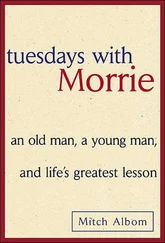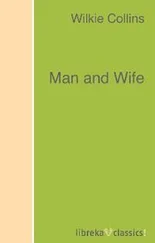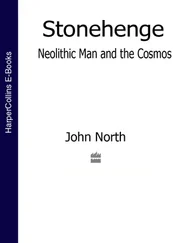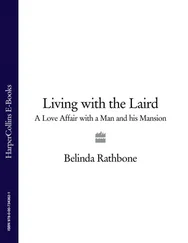1 ...7 8 9 11 12 13 ...23 On the Norfolk estate under discussion, red-legged partridges have increased over roughly the same period that the grey have declined (see Fig. 26 and Chapter 7, p. 176). It is interesting that, in contrast to the case of the grey partridge, the autumn ratio of young to old has not been the factor which determines the subsequent spring population of the red-legged partridge (Fig. 3b). There were some years when more red-legs were shot in the autumn and winter on the estate than were actually known to be there at the beginning of the shooting season, and numbers sometimes were higher in spring than in the autumn. Clearly, something has been happening which has enabled immigrant red-legs to move into the area from surrounding farms or marginal land (see here). This suggestion highlights another facet of population control which must be considered, namely the role of immigration and emigration. In the case of the wood-pigeon, juvenile birds which are surplus to the carrying capacity of the area in the autumn do not necessarily die but may emigrate to other areas – to marginal habitats or even to France. A proportion survive to return in the spring. Although winter numbers may be directly related to the food supply – for the death-rate depends on how many surplus birds exist in relation to this food supply (in a poor year for food there is not necessarily any mortality if the population is already in balance with food stocks) – the number in spring will depend not only on local survival but also on how many of the emigrants survive to return. These complications do not invalidate the contention that in any area at the worst season numbers are regulated by the food supply (for the rest of the year there may be more food than birds to eat it, especially if breeding cannot be accomplished quickly enough), but they add to the difficulty of demonstrating clear-cut relationships, and are sometimes introduced in ill-conceived arguments as evidence against the theory.
Fig. 4 shows the autumn population, in decreasing order of size, of the grey partridge on the Norfolk estate against the percentage of birds dying in winter, either as a result of shooting or through natural causes. Similar data for the red-leg are also detailed, these being plotted against the appropriate years for grey and not in their own size order. The figure demonstrates in the case of the grey partridge that mortality due to shooting and other factors combined is positively correlated with the size of the autumn population, that is, it is density-dependent. The percentage of birds shot is even more strongly correlated with the numbers available for shooting and is also correlated with the total mortality. In contrast, natural mortality is not correlated with autumn numbers nor with shooting loss. That death by shooting should be adjusted to the autumn population is to be expected, since the people involved determine their activities according to the prospects; in years when autumn numbers are small, with a low young to old ratio, shooting is voluntarily abolished or curtailed. This attitude is mistaken for the simple reason that, in spite of shooting, additional animals have in any case to be lost to ensure stability in the spring, and if none are shot more disappear through other causes. This is well shown in Fig. 4 for the year 1954 when little or no shooting occurred and the level of natural mortality was raised. As a result the death-rate was at virtually the same level as it was in 1952 and 1955, when extensive shooting took place. Although enough animals are shot to ensure a density-dependent controlling effect on the winter population, this is only so because shooting obscures other causes of death. Because shooting may actually account for deaths it is not the reason why these occur: they would also occur in the absence of shooting. Jenkins reached this same conclusion for partridges he studied on Lord Rank’s estate at Micheldever in Hampshire, and he and his colleagues (Jenkins, Watson and Miller) have more recently found that the same applies in the case of the grouse – the details are shown graphically in Fig. 5. The practical conclusion to be drawn from these studies is that people could as a rule enjoy more intensive shooting without detriment to game stocks – though this conclusion caused scepticism among many shooting men. It is ironical, therefore, that my colleagues and I found exactly the same principle to apply to a pest bird, the wood-pigeon. The number of these shot during organised battues in February was always less than the number which had to be lost to bring about stability in relation to clover stocks. We concluded that winter shooting was not controlling the population, nor in the circumstances did it reduce crop damage. Again this conclusion caused scepticism among many shooting men who could not appreciate that causes of death are compensatory, not additive. Only if more birds are shot than will be lost in any case can shooting become a controlling factor, in the sense that it will reduce numbers to lower levels in the next season.
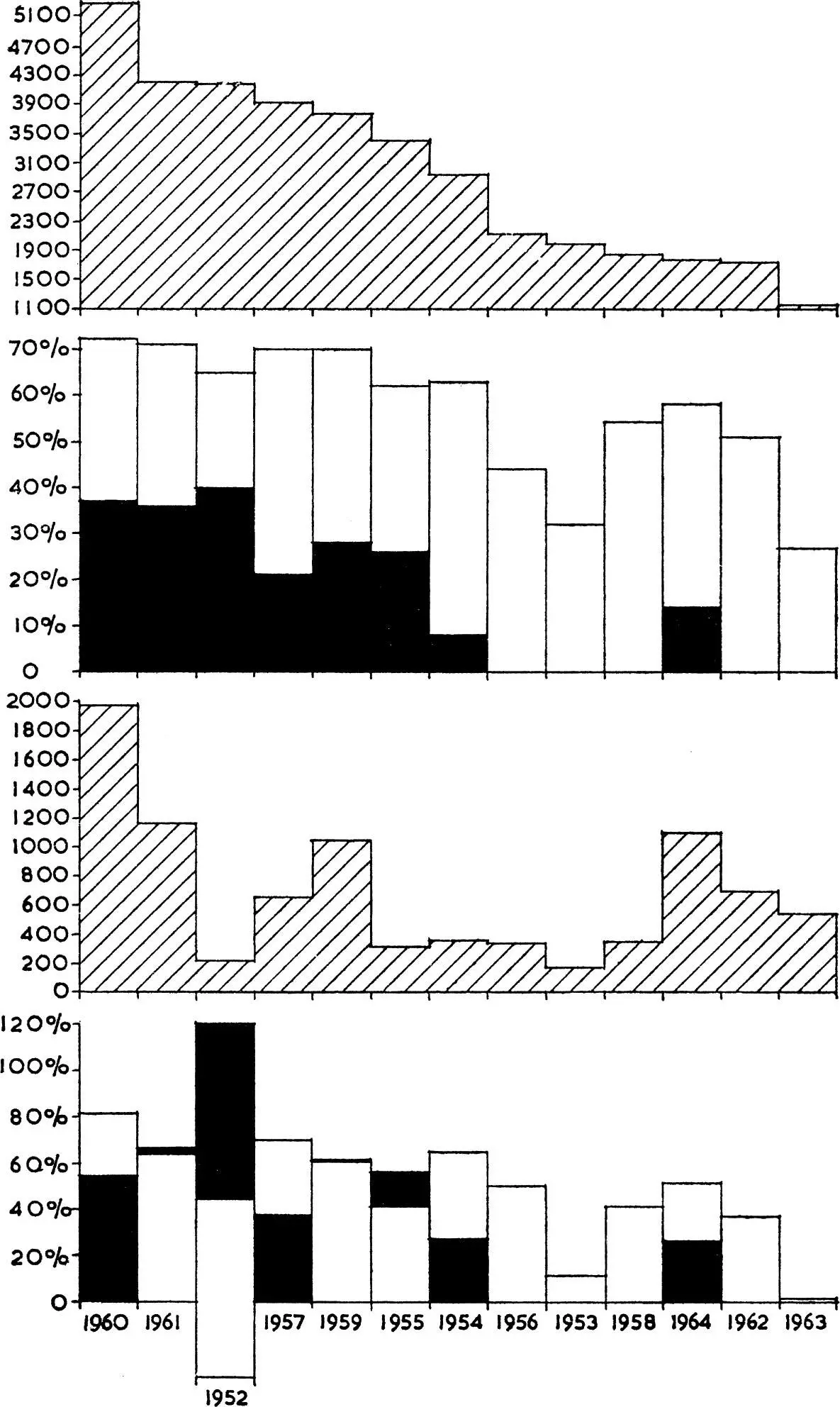
FIG. 4. Relationship between the autumn population of the grey partridge (top hatched histogram) and red-legged partridge (third histogram from top, hatched) with the percentage of these populations lost between autumn and the following spring represented in the histograms below each. The percentage of birds lost is given by the open columns, and the percentage of these birds which were shot by the solid black. Loss due to other causes, is therefore, the difference between black and open parts of the columns.
[For the grey partridge the total mortality in winter is correlated with the autumn population being heavier in years of higher autumn numbers r 11=0.827. The percentage shot each winter is correlated with the autumn population r 11=0.909. The percentage shot is not correlated with the number lost for other reasons r 11= —0.420.
For the red-legged partridge the total mortality in winter is less correlated with the autumn population of red-legs, r 11=0.583, and more correlated with the autumn population of grey birds r 11=0.747. The number of red-legs shot bears no relation to the autumn population of red-legs but is related to the autumn population of the grey, r 11=0.789.]
The reason for some of the apparently anomalous results with the red-leg in which a higher proportion of birds was sometimes shot than was present in autumn is that the birds were moving into the area. Thus in 1952 the autumn population was 214, 259 birds were shot yet the spring population was 120, i.e. 121% of the autumn population was shot, there was a 77% loss not due to shooting (theoretically the difference between the total loss from autumn to spring=44%; with the loss due to shooting subtracted = — 77%, and this has to be shown by drawing the column below the base line. (Data derived from Table 1, from Middleton & Huband 1966).
The number of red-legged partridges shot on the Norfolk estate has borne only a slight correlation with the autumn numbers (Fig. 4). As the red-leg was much rarer than the grey, any decision on the numbers to be shot was made relative to the latter species, or more accurately to the total numbers of both species, rather than to the autumn population of the red-leg. For this reason the percentage of red-legs shot was fairly strongly correlated with autumn numbers of grey birds, while the total winter mortality (shooting plus natural) was slightly less strongly correlated. This illustrates how the amount of predation (in this case shooting) suffered by a species may be determined by the availability of similar prey. In such circumstances, the situation may arise where undesirably large numbers are lost by accident, even resulting in the extinction of a species.
Читать дальше




